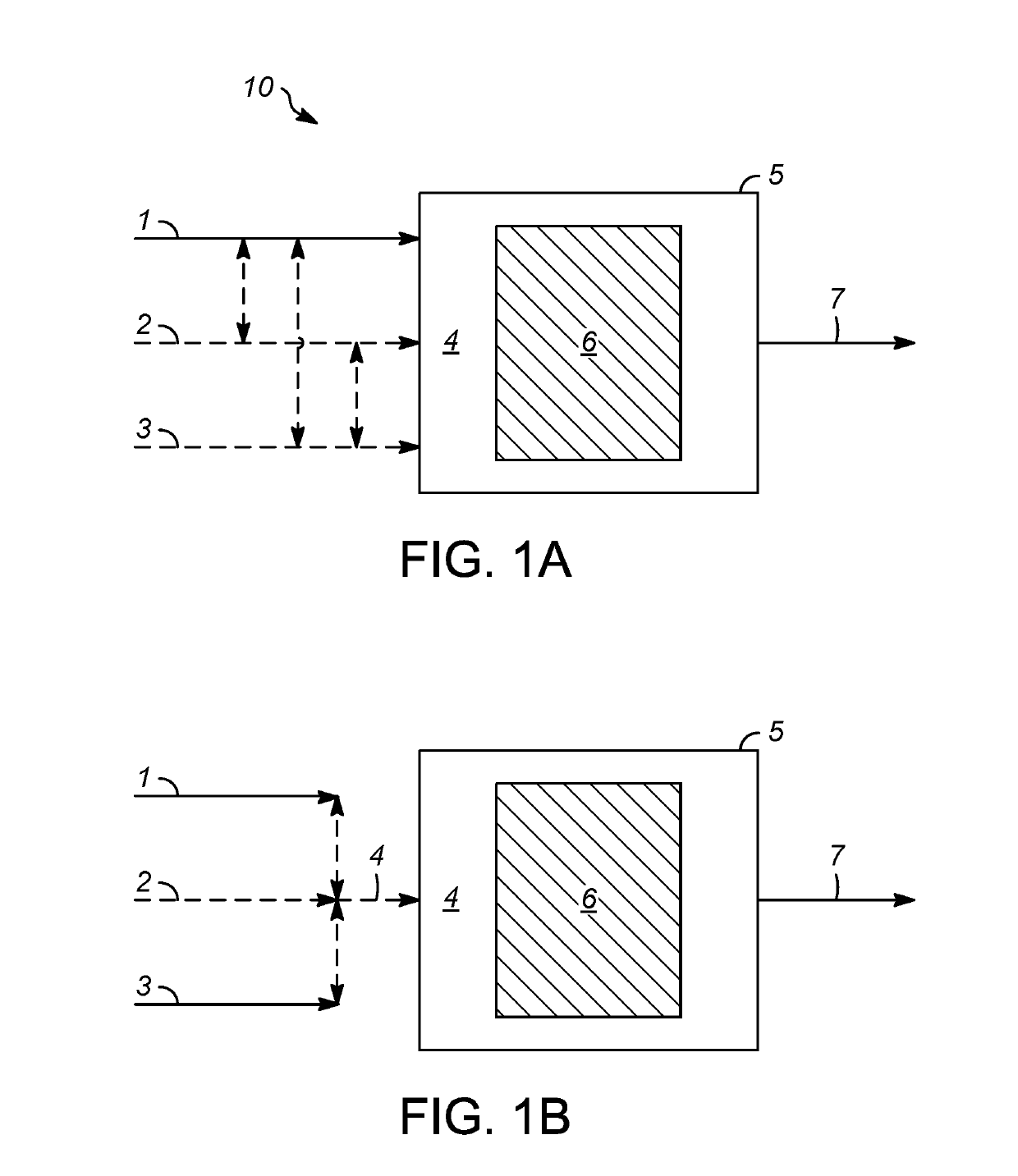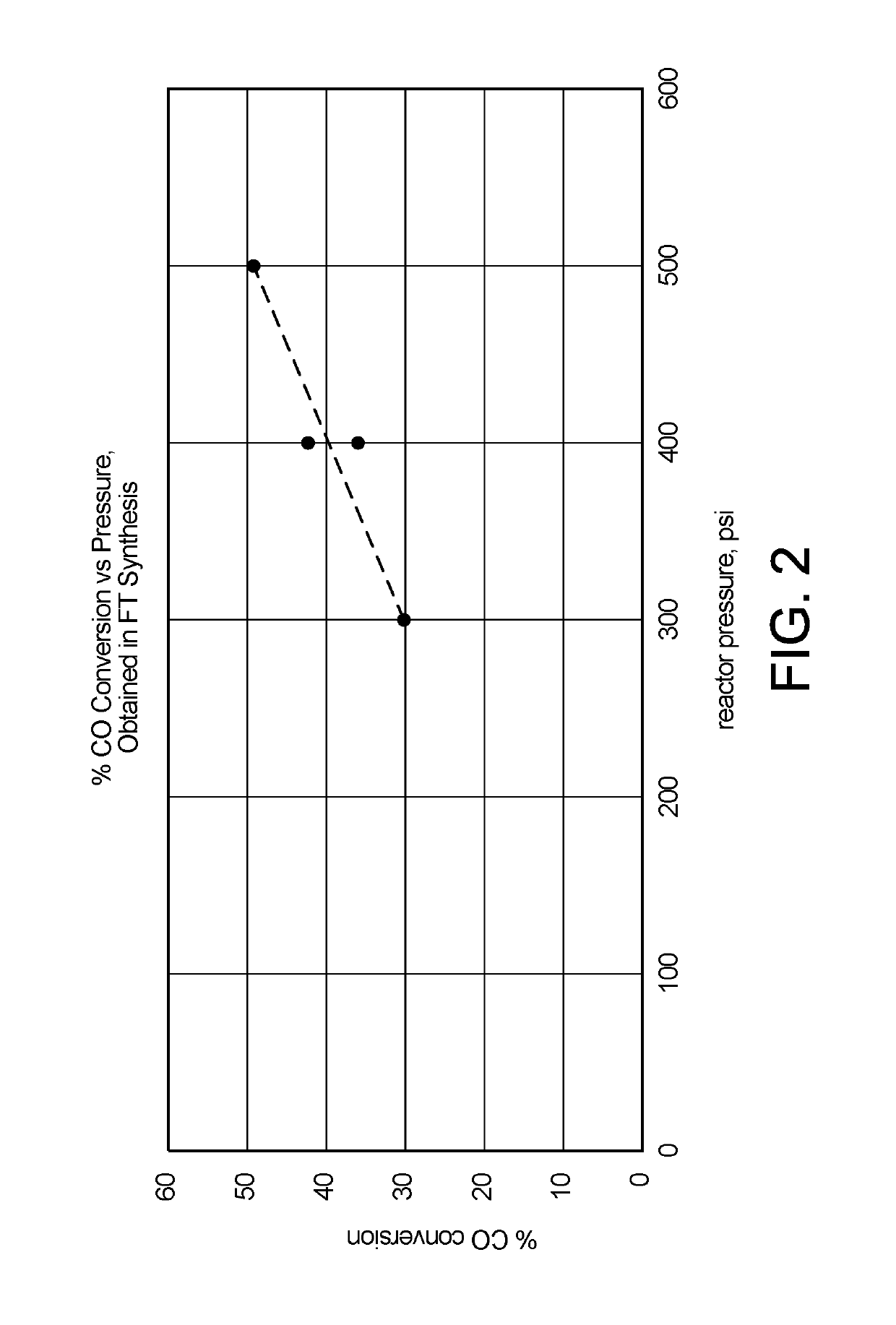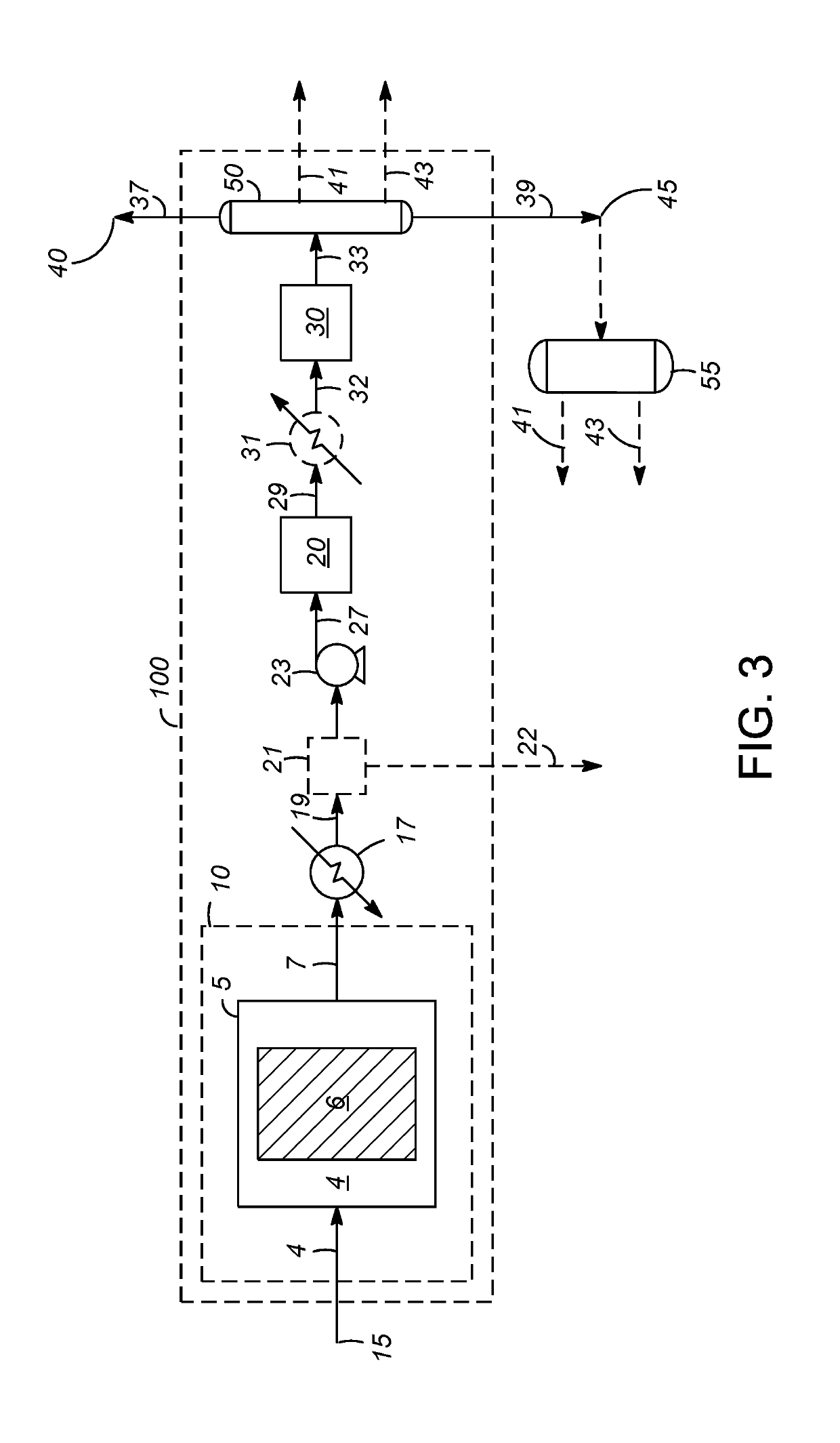Processes and systems for reforming of methane and light hydrocarbons to liquid hydrocarbon fuels
a technology of liquid hydrocarbon fuel and process, which is applied in the direction of gaseous fuel, hydrocarbon oil treatment product, separation process, etc., can solve the problems of problematic transportation of such components to conventional brick and mortar production facilities, and achieves the effects of improving the overall thermodynamics of the process, reducing endothermicity (h) and the required energy input, and high activity
- Summary
- Abstract
- Description
- Claims
- Application Information
AI Technical Summary
Benefits of technology
Problems solved by technology
Method used
Image
Examples
example 1
[0129]CO2-Steam Reforming Studies
[0130]Pilot plant scale experiments were performed in which gaseous mixtures were fed continuously to a CO2-steam reforming reactor containing catalyst particles having a composition of 1 wt-% Pt and 1 wt-% Rh on a cerium oxide support. The performance of the system for CO2-steam reforming was tested at conditions of 0.7 hr−1 WHSV, 760° C. (1400° F.), and a gauge pressure ranging from 124 kPa (18 psig) to 172 kPa (25 psig). Two types of gaseous mixtures tested were (1) a composition containing methane, ethane, propane, and CO2, in addition to H2O, and simulating that obtained from the combined hydropyrolysis and hydroconversion of biomass (“Renewable Type”), and (2) a typical natural gas composition having a high level of CO2 (“Natural Gas Type”). The renewable type composition provided an example of a methane-containing feedstock that is also a “hydropyrolysis gaseous mixture,” as described above. The natural gas type composition provided an example...
example 2
[0132]Sulfur Tolerance of CO2-Steam Reforming Catalysts
[0133]Additional experiments were conducted in which a typical natural gas composition as described in Example 1 was subjected to CO2-steam reforming as also described in this example. However, the gaseous mixture or combined feed in this case was spiked with H2S at a concentration of 800 mol-ppm. Despite this high level of sulfur contamination, it was found that the offset in methane conversion was easily restored by increasing the reforming catalyst bed temperature from 760° C. (1400° F.) to 788° C. (1450° F.). Furthermore, the reforming catalyst surprisingly exhibited long-term stability over 400 operating hours (hours on stream) at this temperature, as well as the WHSV and pressure as described above with respect to Example 1. This stability, achieved despite the considerable sulfur concentration, was surprising in view of the sulfur sensitivity of conventional catalysts used for steam methane reforming.
example 3
[0134]Long-Term CO2-Steam Reforming Testing
[0135]The gaseous mixture described in Example 1 as the “Renewable Type” and having the composition provided in Table 1 was tested using the catalyst and conditions as described in Example 1, to evaluate performance of the system for CO2-steam reforming over an extended period of operation. The “Renewable Type” feed or gaseous mixture also provides an example of a representative “hydropyrolysis gaseous mixture” as described above. Long-term stability testing revealed that the composition of the synthesis gas product obtained was stable over 500 hours of operation under these constant conditions, demonstrating essentially no deactivation, over the extended operating period, of the reforming catalyst. FIG. 10 illustrates the stable synthesis gas product composition obtained over this operating period, with a high level of conversion of methane. FIG. 11 illustrates the stable molar H2 / CO ratio of the synthesis gas product obtained, which was n...
PUM
| Property | Measurement | Unit |
|---|---|---|
| temperature | aaaaa | aaaaa |
| pressure | aaaaa | aaaaa |
| temperature | aaaaa | aaaaa |
Abstract
Description
Claims
Application Information
 Login to View More
Login to View More - R&D
- Intellectual Property
- Life Sciences
- Materials
- Tech Scout
- Unparalleled Data Quality
- Higher Quality Content
- 60% Fewer Hallucinations
Browse by: Latest US Patents, China's latest patents, Technical Efficacy Thesaurus, Application Domain, Technology Topic, Popular Technical Reports.
© 2025 PatSnap. All rights reserved.Legal|Privacy policy|Modern Slavery Act Transparency Statement|Sitemap|About US| Contact US: help@patsnap.com



